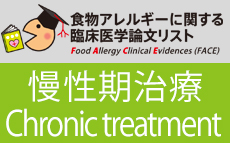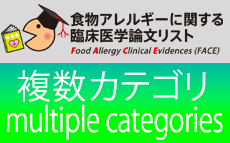Diagnosing and Managing Common Food Allergies
更新日:2016年10月21日
| Author: | Chafen JJ, Newberry SJ, Riedl MA, Bravata DM, Maglione M, Suttorp MJ, Sundaram V, Paige NM, Towfigh A, Hulley BJ, Shekelle PG. |
|---|---|
| Title: | Diagnosing and Managing Common Food Allergies |
| Citation: | Journal of the American Medical Association |
| URL: | https://pubmed.ncbi.nlm.nih.gov/20460624/ |
| Abstract: | Context Thereisheightenedinterestinfoodallergiesbutnoclearconsensusexists regarding the prevalence or most effective diagnostic and management approaches to food allergies. Objective Toperformasystematicreviewoftheavailableevidenceonthepreva- lence, diagnosis, management, and prevention of food allergies. DataSources ElectronicsearchesofPubMed,CochraneDatabaseofSystematicRe- views, Cochrane Database of Abstracts of Reviews of Effects, and Cochrane Central Register of Controlled Trials. Searches were limited to English-language articles in- dexed between January 1988 and September 2009. StudySelection Diagnostictestswereincludediftheyhadaprospective,defined study population, used food challenge as a criterion standard, and reported sufficient data to calculate sensitivity and specificity. Systematic reviews and randomized con- trolled trials (RCTs) for management and prevention outcomes were also used. For foods where anaphylaxis is common, cohort studies with a sample size of more than 100 participants were included. Data Extraction Two investigators independently reviewed all titles and abstracts to identify potentially relevant articles and resolved discrepancies by repeated review and discussion. Quality of systematic reviews and meta-analyses was assessed using the AMSTAR criteria, the quality of diagnostic studies using the QUADAS criteria most relevant to food allergy, and the quality of RCTs using the Jadad criteria. Data Synthesis A total of 12 378 citations were identified and 72 citations were included. Food allergy affects more than 1% to 2% but less than 10% of the popu- lation. It is unclear if the prevalence of food allergies is increasing. Summary receiver operating characteristic curves comparing skin prick tests (area under the curve [AUC], 0.87; 95% confidence interval [CI], 0.81-0.93) and serum food-specific IgE (AUC, 0.84; 95% CI, 0.78-0.91) to food challenge showed no statistical superiority for either test. Elimination diets are the mainstay of therapy but have been rarely studied. Immuno- therapy is promising but data are insufficient to recommend use. In high-risk infants, hydrolyzed formulas may prevent cow’s milk allergy but standardized definitions of high risk and hydrolyzed formula do not exist. Conclusion The evidence for the prevalence and management of food allergy is greatly limited by a lack of uniformity for criteria for making a diagnosis. |
| 邦文タイトル: | 準備中 |
| 一般向け要約 | 準備中 |
| 専門医コメント | 準備中 |


